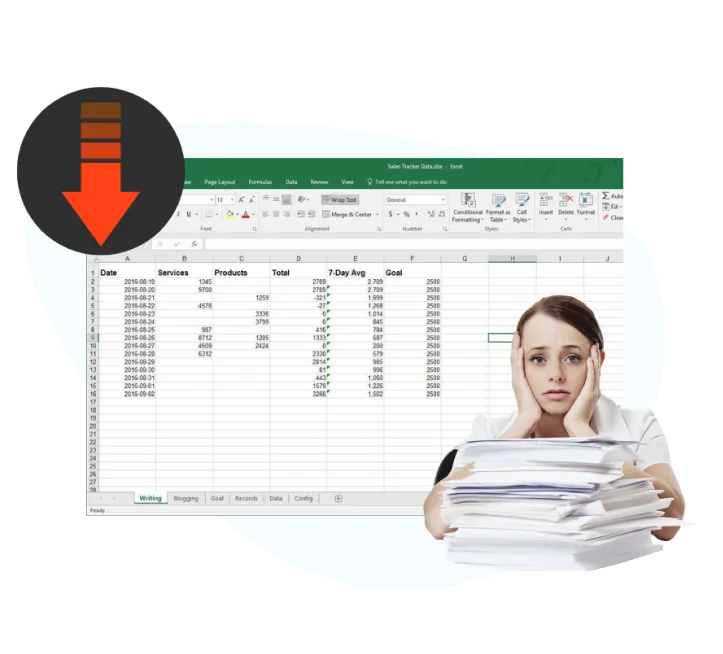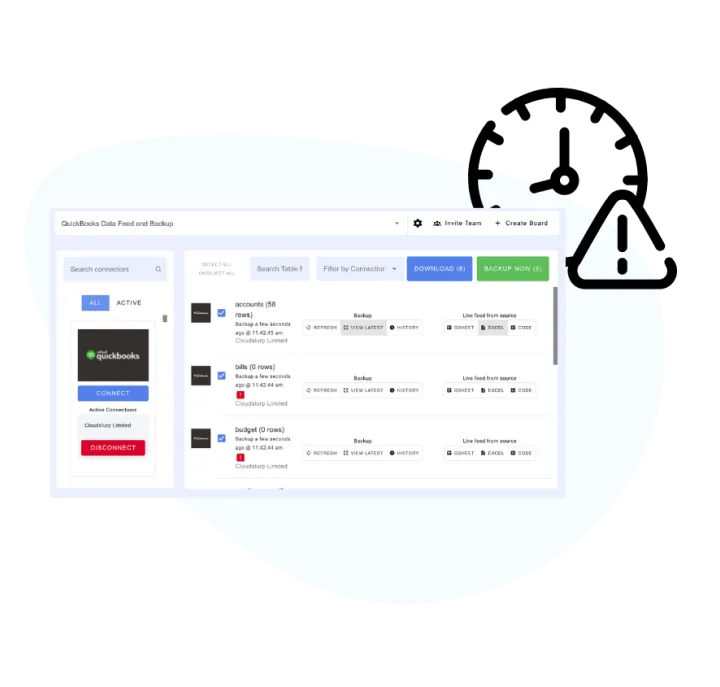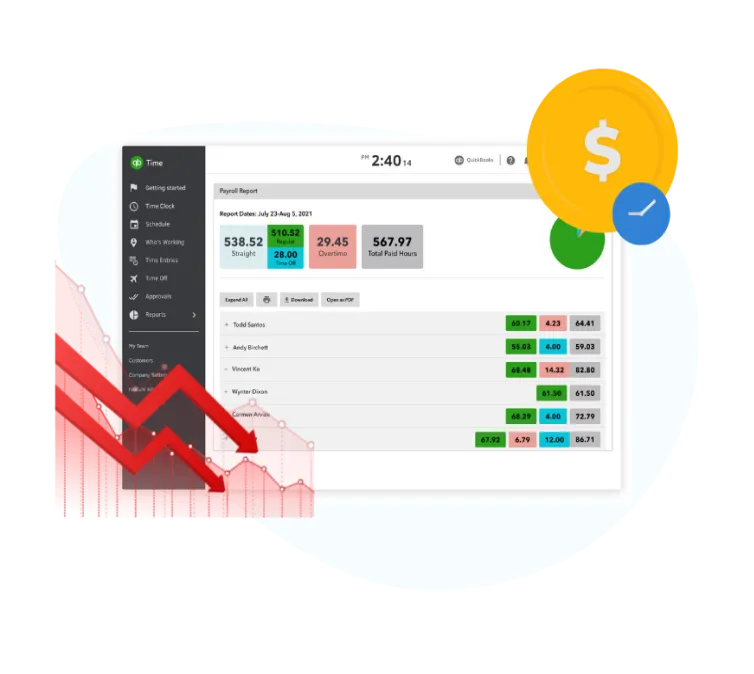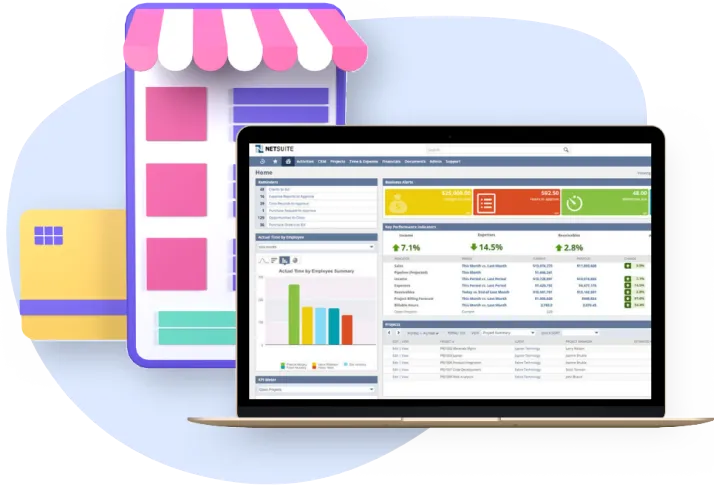
Tell me if any of this resonates with you...
QuickBooks and spreadsheet tools like Excel are often suitable for managing financial tasks when your business is in its early stages. However, as your business expands, the limitations of these tools can become more apparent, leading to increased operational challenges and inefficiencies.
As your business scales up, it's important to recognize the signs that you might be outgrowing these initial solutions.
Here are some key indicators that it might be time to consider more advanced
financial management systems:

Overreliance on
Spreadsheets

Relying heavily on spreadsheets can lead to a deep sense of frustration and vulnerability as your business grows.
Initially simple and convenient, these tools quickly become overwhelming and error-prone, trapping you in a chaotic tangle of data that stifles your company's potential.
This overdependence not only creates a stressful environment but also exposes your business to significant risks, blocking the path to innovation and growth



Scalability
Limitations

Growth often brings complexity in business operations, requiring more sophisticated accounting features. For example, larger businesses might need better tools for multi-currency transactions, advanced inventory management features, or detailed financial forecasting that QuickBooks doesn't offer natively or might offer only in more expensive editions.
As businesses grow, the number of transactions typically increases. This can include everything from sales, purchases, inventory adjustments, to payroll entries. QuickBooks might experience performance slowdowns or become less efficient with handling larger datasets, which can affect daily operations and reporting accuracy.

Reporting
Limitations

QuickBooks comes equipped with a suite of built-in reporting and dashboard features designed to help businesses manage their financial data effectively.
However the advertising and media industry has some unique reporting requirements and many business owners find themselves relying on external spreadsheet software like Microsoft Excel or Google Sheets.
This reliance involves exporting data from QuickBooks and then manipulating it in spreadsheets to create custom reports. This process not only increases the workload but also introduces a greater risk of errors due to manual data entry and manipulation.



Tracking Insertion Orders is a Headache

Lack of Real-Time Visibility: Without a centralized system, tracking insertion orders manually can lead to delays and inaccuracies, as updates and changes might not be immediately visible to all stakeholders.
Increased Risk of Errors: Manual tracking methods such as spreadsheets or paper records are prone to human error, which can result in miscommunication, misplaced orders, and incorrect data entries.
Inefficiency and Time Consumption: Managing insertion orders outside a system often involves repetitive tasks and manual data entry, which can be time-consuming and divert resources away from more strategic activities.

Project Billing takes Too Long

Time-Consuming and Inefficient: Managing project billing with spreadsheets requires manual data entry and frequent updates, which is labor-intensive and time-consuming. This inefficiency can divert valuable resources from more strategic tasks.
Data Inconsistencies and Errors: Spreadsheets are prone to human error, which can lead to discrepancies in billing data. This can result in incorrect invoices, delayed payments, and strained client relationships.
Lack of Real-Time Updates: Spreadsheets do not provide real-time updates, making it challenging to keep track of project progress and billing status. This can lead to outdated information, missed billing opportunities, and difficulty in maintaining accurate financial records.



Disconnected Operations and Financials

Data Silos and Inconsistent Information: Disconnected systems lead to data silos where operations and finance have separate sets of information. This inconsistency can cause misunderstandings, errors in financial reporting, and difficulty in maintaining accurate and up-to-date records.
When systems are not seamlessly connected, it can lead to a disjointed workflow, causing delays, errors in order processing, and a frustrating customer experience.
This disconnection can hinder a company’s ability to scale efficiently and respond quickly to market demands, ultimately impacting revenue and growth opportunities.

Lack of Realtime
Financials

Operating without real-time financials can leave businesses navigating in the dark, struggling to make informed decisions swiftly.
This delay in financial reporting can lead to missed opportunities and reactive instead of proactive management, stalling growth and innovation.
The inability to access up-to-date financial data creates a stressful environment of uncertainty, making it challenging to respond to market changes effectively.



Lack of an Efficient Time Entry Application

Inaccurate Billing and Revenue Leakage: Without an efficient time entry system, it becomes challenging to track billable hours accurately. This can lead to underbilling, missed billable hours, and ultimately, revenue leakage, affecting the profitability of the business.
Administrative Burden and Decreased Productivity: Inefficient time entry processes often require manual data entry and frequent follow-ups, increasing administrative workload. This not only consumes valuable time but also distracts professionals from focusing on their core tasks and delivering high-quality services.
Lack of Visibility and Accountability: An inefficient time entry system can obscure insights into how time is being spent across projects and clients. This lack of visibility makes it difficult to monitor project progress, manage resources effectively, and hold team members accountable for their time, leading to potential project delays and cost overruns.

Lack of Subcontractor Oversight

Inaccurate Billing and Cost Overruns: Without an efficient time entry system for subcontractors, tracking billable hours accurately is challenging. This can result in incorrect invoices, leading to disputes, delayed payments, and cost overruns that impact project budgets and profitability.
Increased Administrative Workload: Managing subcontractor hours manually often involves extensive administrative effort, including data entry and verification. This added workload diverts resources from more strategic tasks, reducing overall operational efficiency.
Poor Project Visibility and Control: Inefficient time entry systems for subcontractors can lead to a lack of real-time insights into their work progress. This hampers the ability to monitor project timelines, allocate resources effectively, and ensure that subcontractors are meeting their commitments, potentially causing project delays and quality issues.

If you said “YES” to any of the above, then you’re in the right place!
Replace QuickBooks and Spreadsheets with NetSuite

Elevate your advertising and media business with NetSuite, the all-in-one cloud ERP solution tailored for your industry's unique needs. Our platform brings together every aspect of your business—from supply chain logistics to customer engagement—into one seamless system.
Gain real-time visibility and unparalleled control, enabling more efficient operations, reduced costs, and better decision-making. With advanced analytics at your fingertips, stay on top of market trends and consumer behaviors to outpace the competition. Whether you're scaling up or optimizing existing processes, NetSuite grows with you. Revolutionize your business with NetSuite and lead the way in innovation.


Integrated Time Entry

Implementing an integrated time entry application that seamlessly connects with project management systems offers numerous advantages. It ensures accurate and real-time tracking of billable hours, reducing errors and enhancing billing accuracy. This integration streamlines administrative tasks, significantly lowering the workload associated with manual data entry and verification. Additionally, it provides comprehensive visibility into project progress and resource allocation, enabling better decision-making and efficient project management. By fostering improved accountability and transparency, an integrated time entry system ultimately drives productivity, optimizes costs, and enhances overall project outcomes.



All in One - Projects, Billing and Financials

Implementing an integrated system that combines project management, billing, and finance offers significant advantages by centralizing and streamlining these critical functions. This integration ensures accurate and real-time tracking of project progress and financials, leading to precise billing and reducing errors. It simplifies administrative tasks by automating data entry and synchronization, thus enhancing efficiency and reducing the risk of discrepancies. Improved visibility into financial performance and project metrics allows for better decision-making and resource allocation. Overall, an integrated system drives operational efficiency, optimizes costs, and enhances financial accuracy, ultimately contributing to the success and profitability of projects.

Leverage Approvals

Incorporating an approval workflow within project management and billing systems offers numerous advantages by ensuring accuracy, accountability, and efficiency. Approvals help verify that all project milestones and deliverables meet quality standards before proceeding to the next phase, reducing the risk of errors and rework. In billing, approval processes ensure that all invoices are accurate and comply with contractual terms, preventing disputes and delayed payments. This structured approach enhances transparency and communication among team members and stakeholders, fostering trust and collaboration. Ultimately, approval workflows streamline operations, improve financial control, and contribute to the timely and successful completion of projects.



Insertion Order Management

Implementing insertion orders in NetSuite offers numerous advantages by centralizing and streamlining the management of advertising and media purchases. With NetSuite, you gain real-time visibility into the status and performance of insertion orders, ensuring accurate tracking and reducing the risk of errors. This integration allows for automated workflows, simplifying the creation, approval, and management of insertion orders, thereby saving time and reducing administrative burden. Additionally, the seamless flow of information between departments enhances collaboration and ensures consistency across financial and operational data. Ultimately, using insertion orders in NetSuite improves efficiency, enhances accuracy, and provides valuable insights that drive better decision-making and optimize advertising spend.

Realtime
Financials

NetSuite provides real-time financials, enabling immediate insight into your business's financial health and facilitating swift, data-driven decision-making.



Manufacturing
Workflows

NetSuite streamlines manufacturing workflows, integrating production processes with real-time data for enhanced efficiency and reduced downtime.
I Help Advertising and Media Organizations Scale

Zabe Siddique is widely acknowledged for his expertise in Enterprise Resource Planning (ERP) systems with a career that spans over 25 years. Zabe's journey through the world of ERP is not just about his career milestones; it's a story of his genuine passion and consistent dedication to helping organizations transform their business with ERP.
“My expertise lies in partnering with companies to navigate the complex journey of business transformation through the strategic implementation of ERP solutions. I assist organizations in streamlining their processes, enhancing operational efficiency, and achieving a competitive edge in their respective industries.”
Zabe Siddique
CEBA Solutions CEO and Founder

Why CEBA Solutions

CEBA Solutions is a prominent NetSuite Solution Provider known for its expertise in delivering advanced NetSuite implementations for a diverse range of industries including
advertising and media.
At CEBA Solutions, we excel in customizing NetSuite implementations specifically for the advertising and media industry. Our team understands the distinct challenges and needs of this sector, from complex supply chain management to stringent regulatory compliance. We delve deep into each client's specific requirements, leveraging NetSuite to craft a system as distinctive as their business.
Our commitment goes beyond system implementation; we aim to build lasting partnerships with our clients. We provide continuous support and enhancements well after the initial setup, ensuring that our clients' investments in NetSuite deliver ongoing value. What truly distinguishes us at CEBA Solutions is our dedication to adapting our solutions to the evolving needs of the advertising and media industry, helping our clients thrive in a competitive landscape.


Our Client Review

"CEBA was the partner that we needed to implement NetSuite in a thoughtful and pragmatic way. We lost three months by not having a conversation with CEBA first"
Pat Piette - CFO, Sabbel Concepts

"I can explain a situation to Zabe and he knows exactly where we need to tackle that challenge and how to direct his team to ensure that we get there, and to make sure that the ultimate outcome is exactly what I'm looking for as a client. He does a really good job of that."
Steve Robertson - CFO, HDMI











